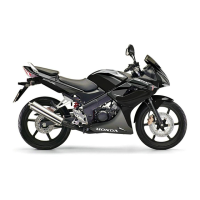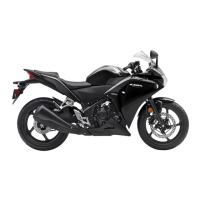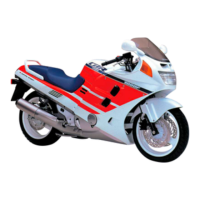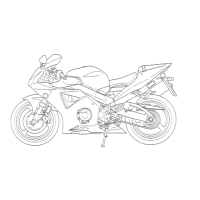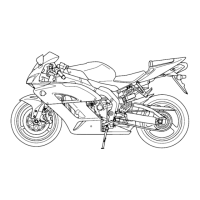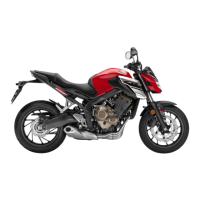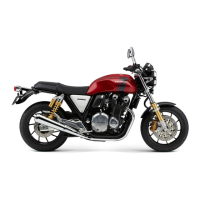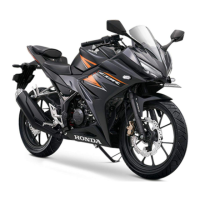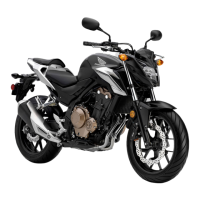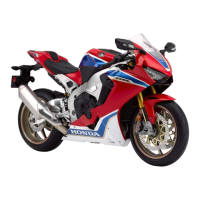Do you have a question about the Honda CBR 2018 Series and is the answer not in the manual?
Essential guidelines for rider safety and safe motorcycle operation.
Explains the importance and meaning of safety labels on the motorcycle.
Covers protective apparel and essential rider behavior for safety.
Details precautions for riding, including break-in, brakes, parking, and refueling.
Advises on safe use of accessories and warns against unauthorized modifications.
Guidelines for proper loading, weight limits, and securing luggage.
Diagrams identifying key motorcycle components and their locations.
Explains dashboard instruments, indicators, and switches for operation.
Details the operation of various switches, the ignition system, and steering lock.
Procedures for engine starting, gear shifting, and refueling the motorcycle.
Describes the location and use of storage features like helmet holder and document bag.
Emphasizes maintenance for safety, performance, and longevity.
Outlines recommended service intervals and tasks for the motorcycle.
Covers essential checks, periodic inspections, and general component care.
Procedures for removing/installing body panels, battery, seats, and clips.
Covers spark plug, engine oil, coolant, brakes, drive chain, clutch, and throttle.
Information on side stand, crankcase breather, and suspension adjustments.
Addresses engine starting issues and overheating problems.
Explains warning lights and procedures for tire punctures.
Solutions for battery, fuse, and lighting system problems.
Information on ignition keys, VIN, and engine serial numbers.
Guidelines for washing, polishing, and storing the motorcycle.
Advice on transporting the motorcycle and protecting the environment.
Explains motorcycle emission control systems and requirements.
Information on the catalytic converter, fuel types, and their impact.
Details authorized manuals, warranty, service, and Honda contact information.
Procedures for reporting vehicle safety defects to NHTSA.
Lists key specifications like dimensions, weight, displacement, and gear ratios.
Provides detailed service data for tires, fluids, spark plugs, and engine oil.
Lists torque values for components and fuse ratings.
| Engine Type | Liquid-cooled inline four-cylinder |
|---|---|
| Displacement | 999cc |
| Transmission | 6-speed |
| Fuel Capacity | 4.3 gallons |
| Seat Height | 32.3 inches |
| Valve Train | DOHC; four valves per cylinder |
| Ignition | Computer-controlled digital transistorized with electronic advance |
| Rear Suspension Detail | Pro-Link single shock with adjustable preload, compression and rebound damping |
| Front Tire | 120/70ZR-17 |
| Rear Tire | 190/50ZR-17 |
| Trail | 96mm (3.8 inches) |
| Front Brakes | Dual 320mm discs |
| Rear Brakes | Single 220mm disc |
| Bore x Stroke | 76mm x 55.1mm |
| Induction | PGM-DSFI |
| Final Drive | Chain |
| Front Brakes Detail | Radial-mounted four-piston calipers |
| Rear Brakes Detail | Single-piston caliper |
| Horsepower | 189 hp @ 13, 000 rpm |
| Torque | 84 lb-ft @ 11, 000 rpm (claimed) |
